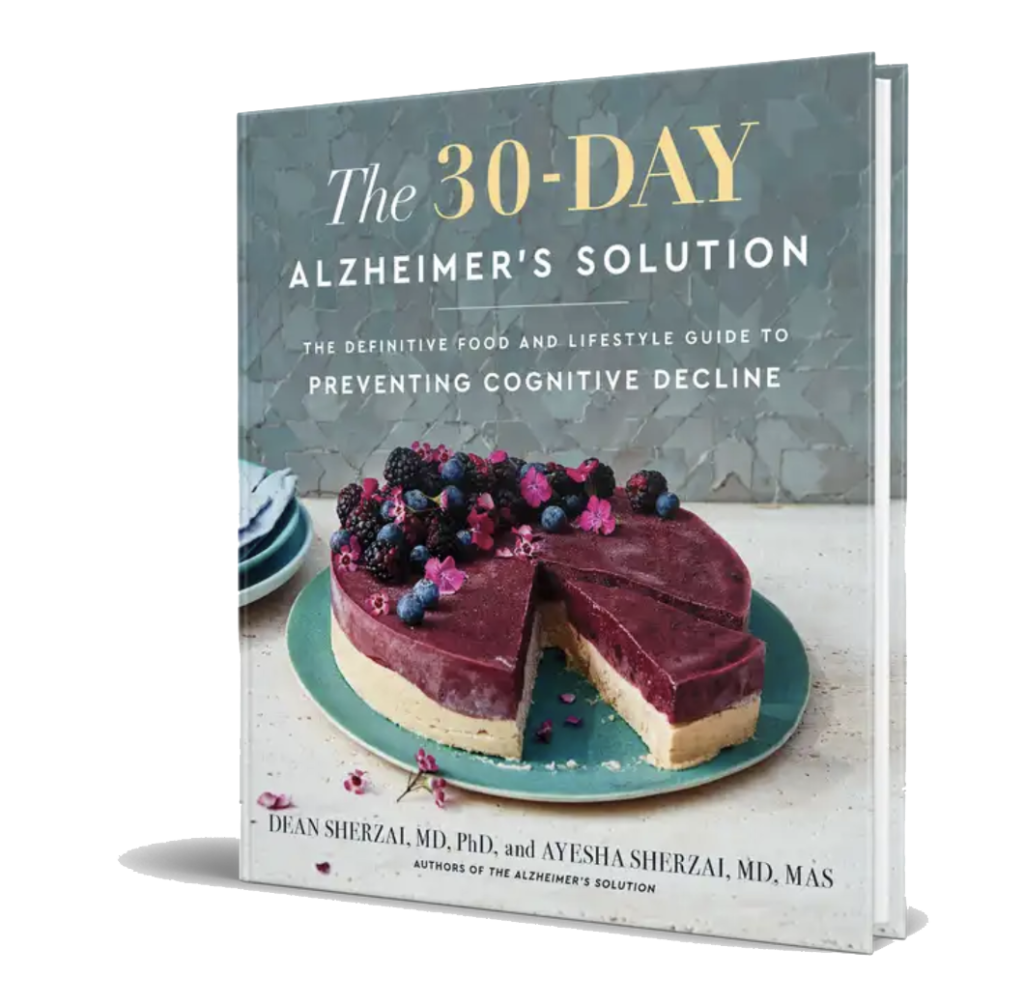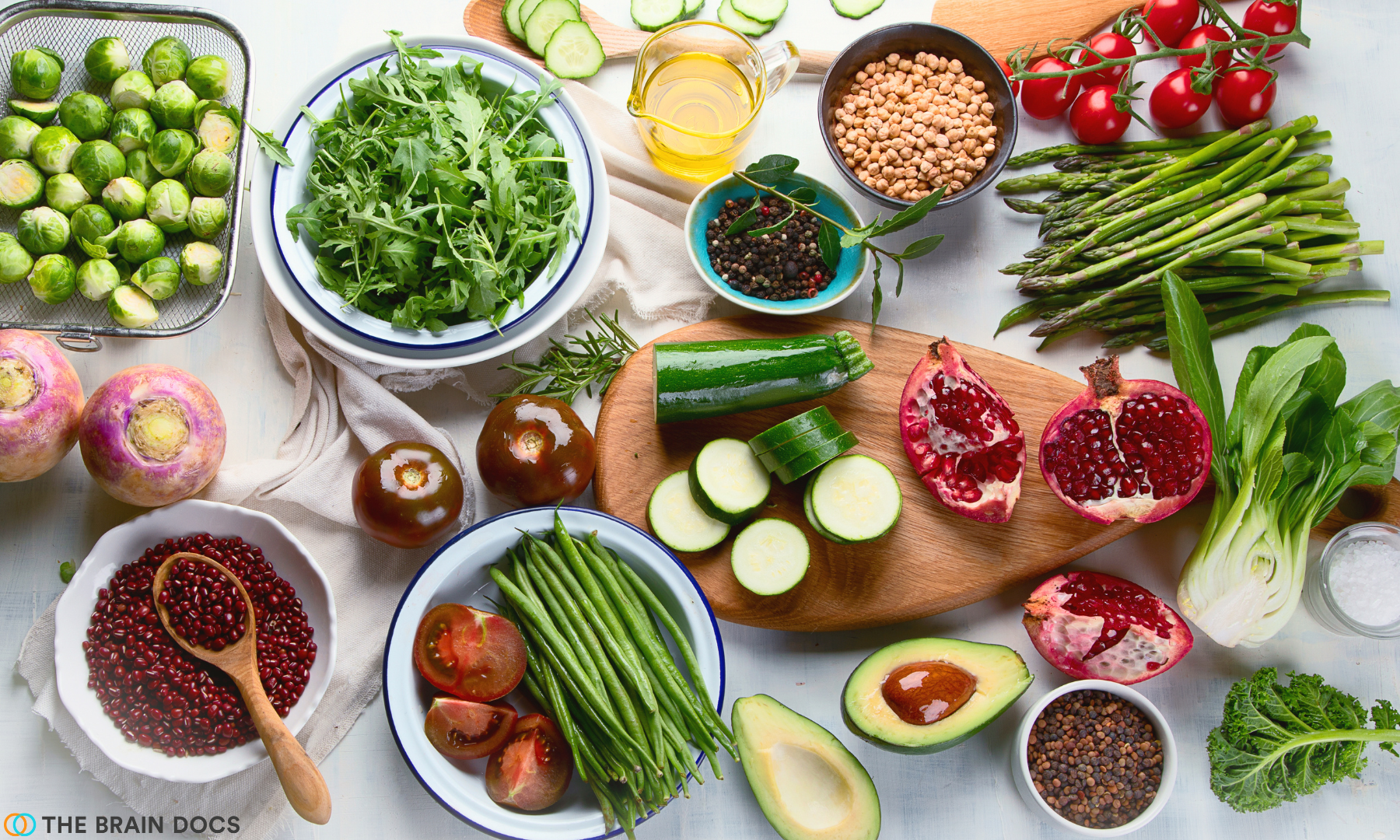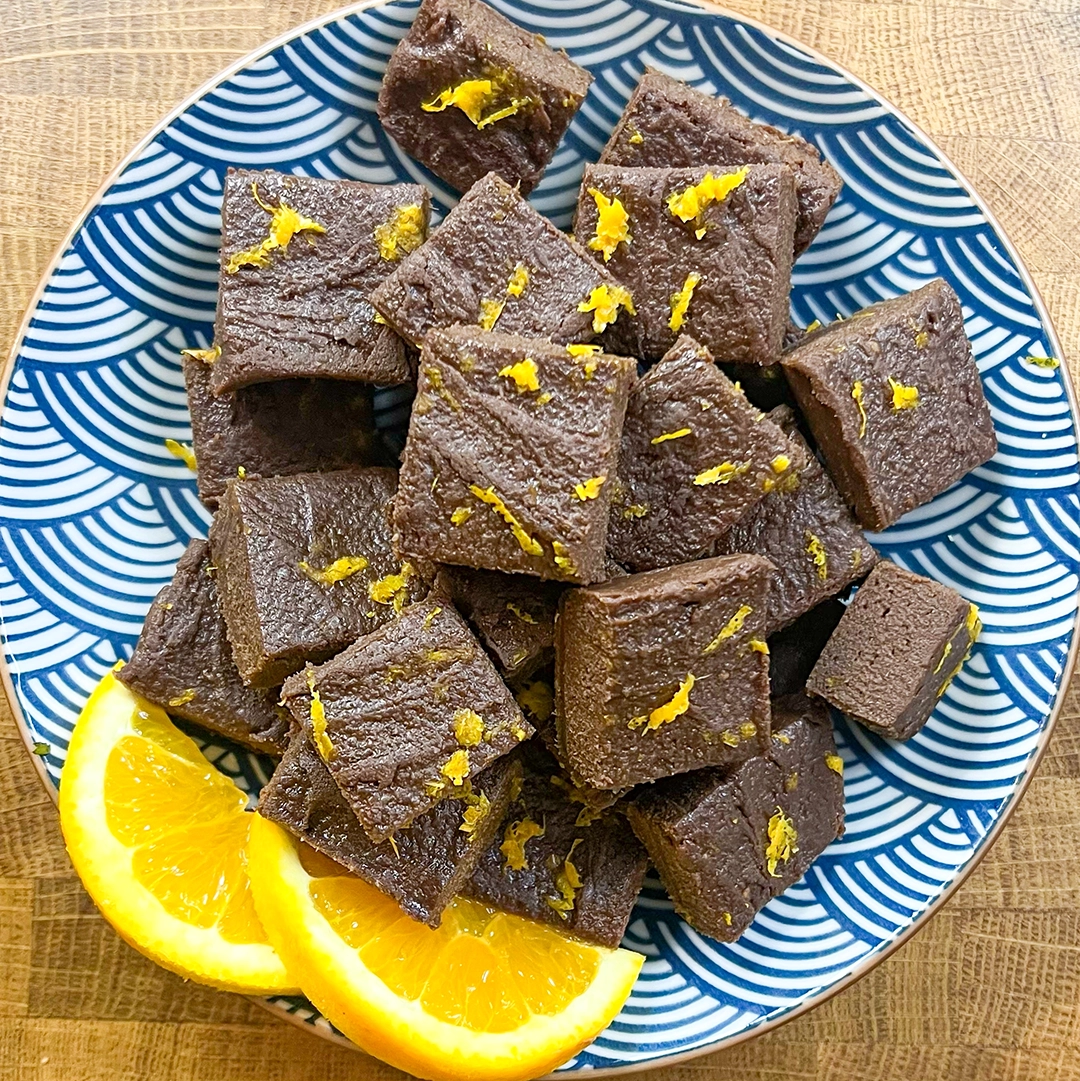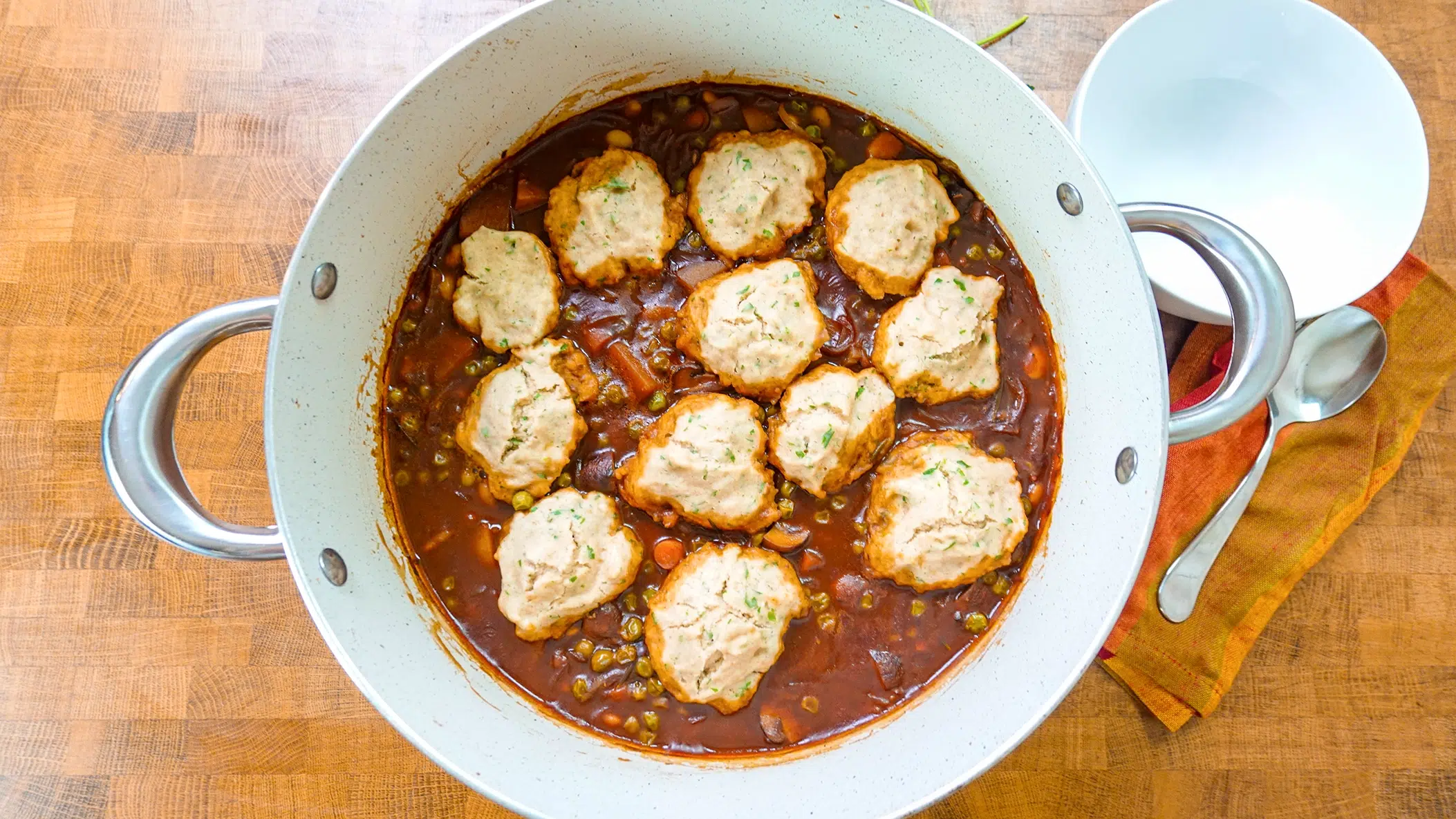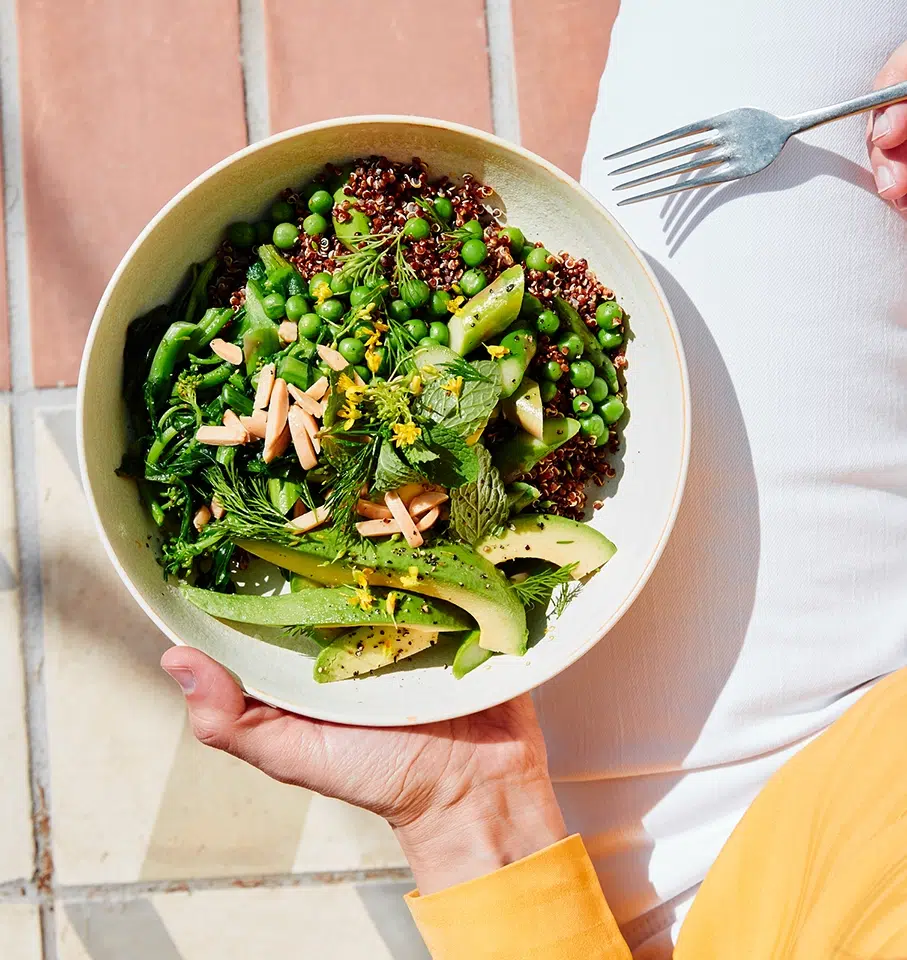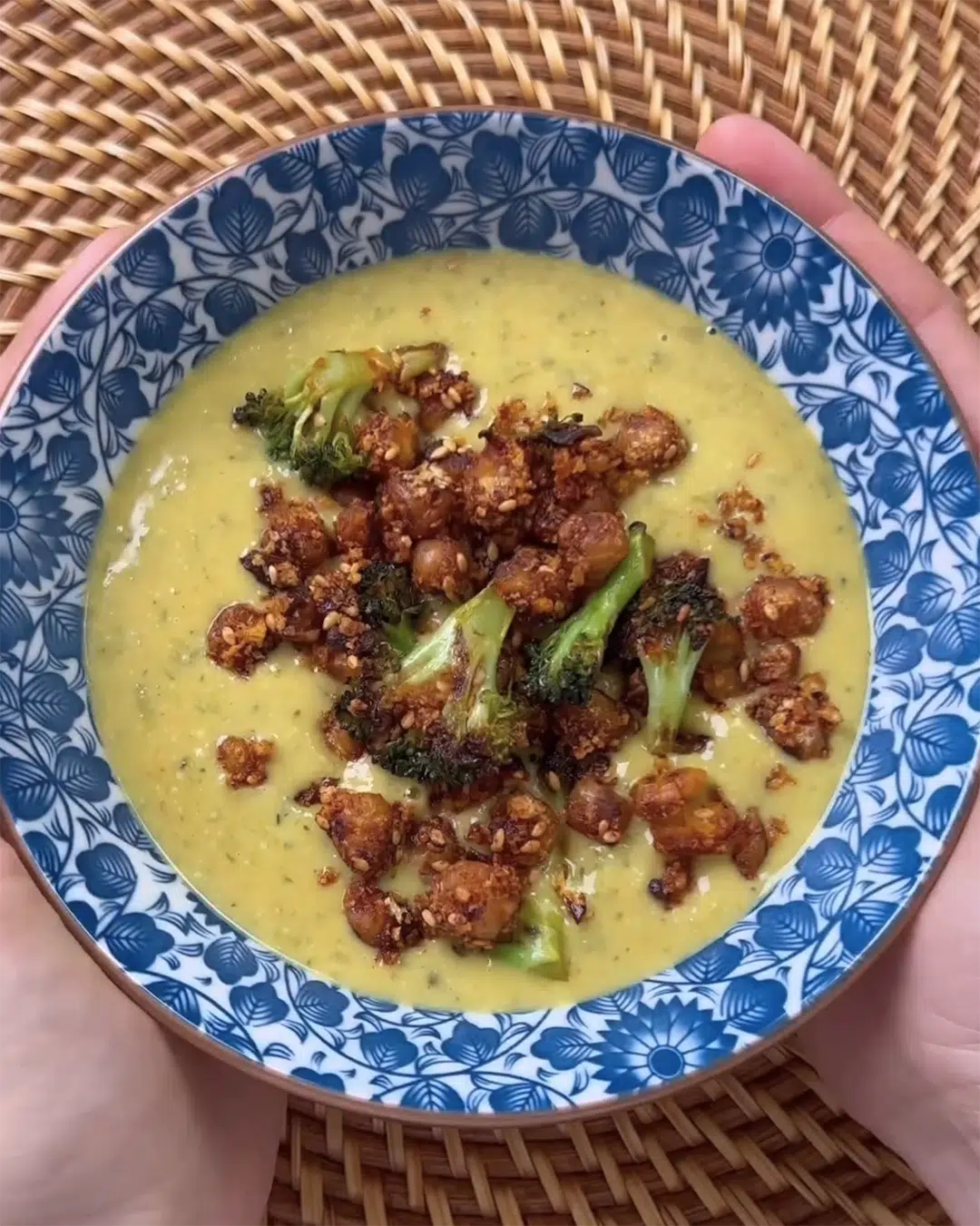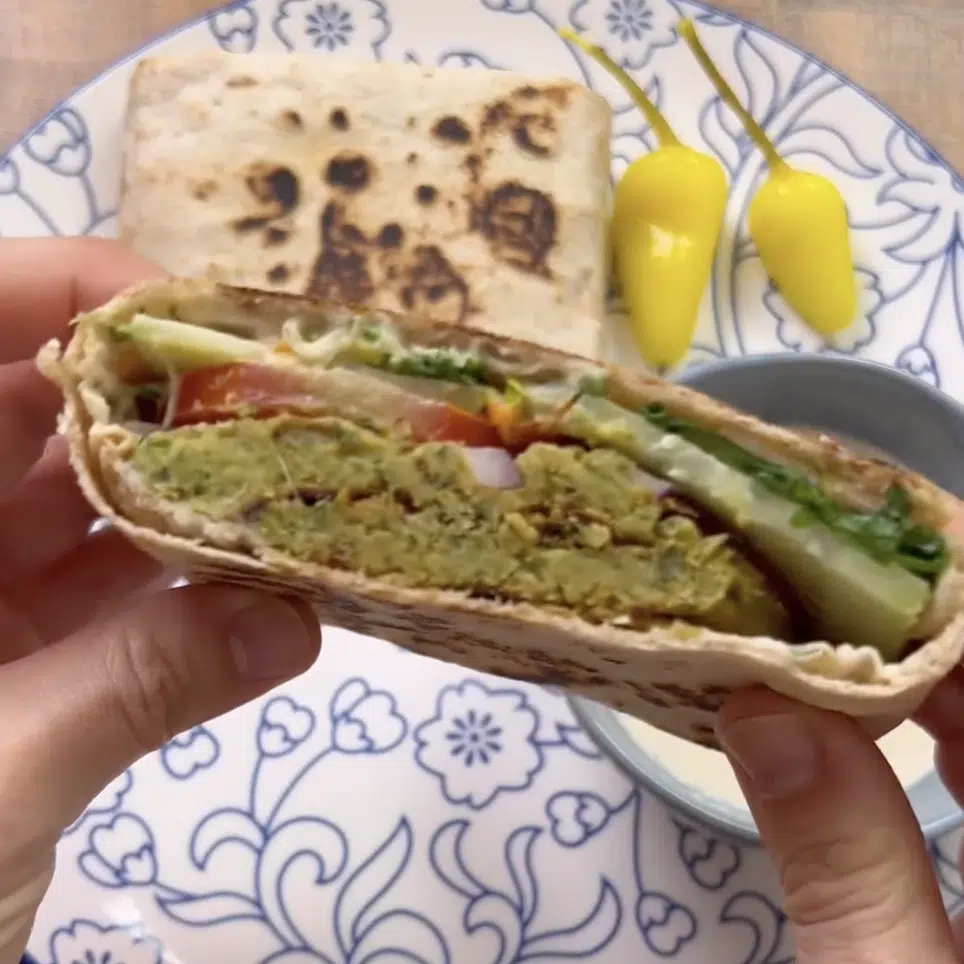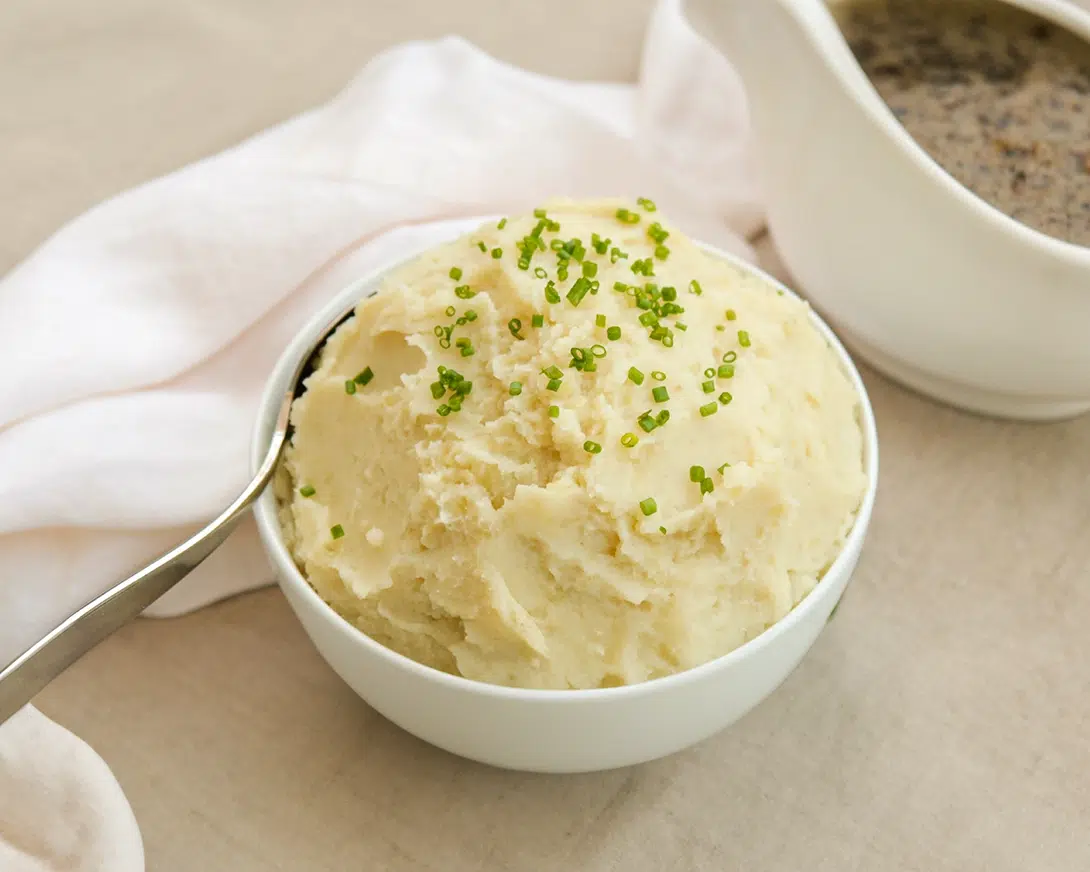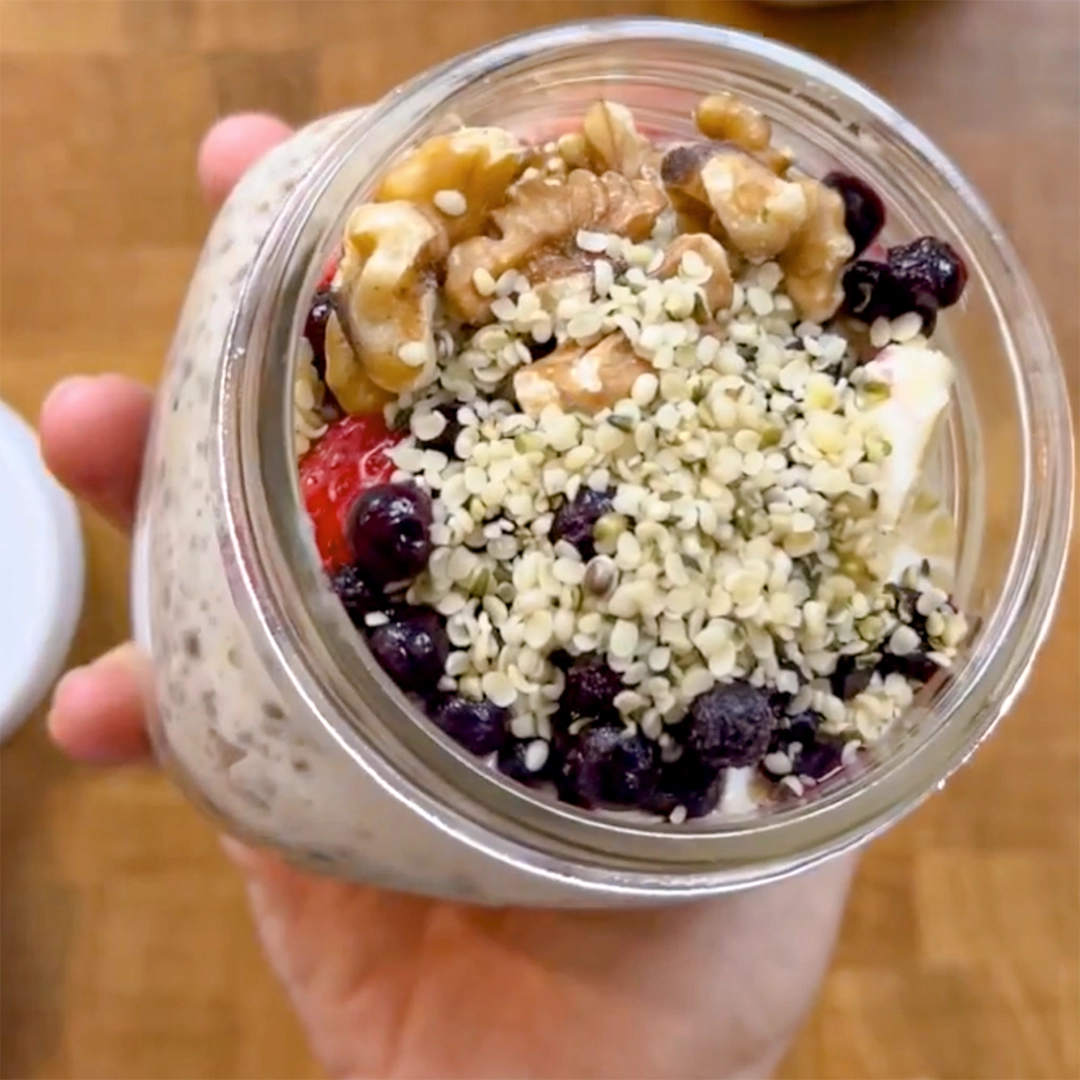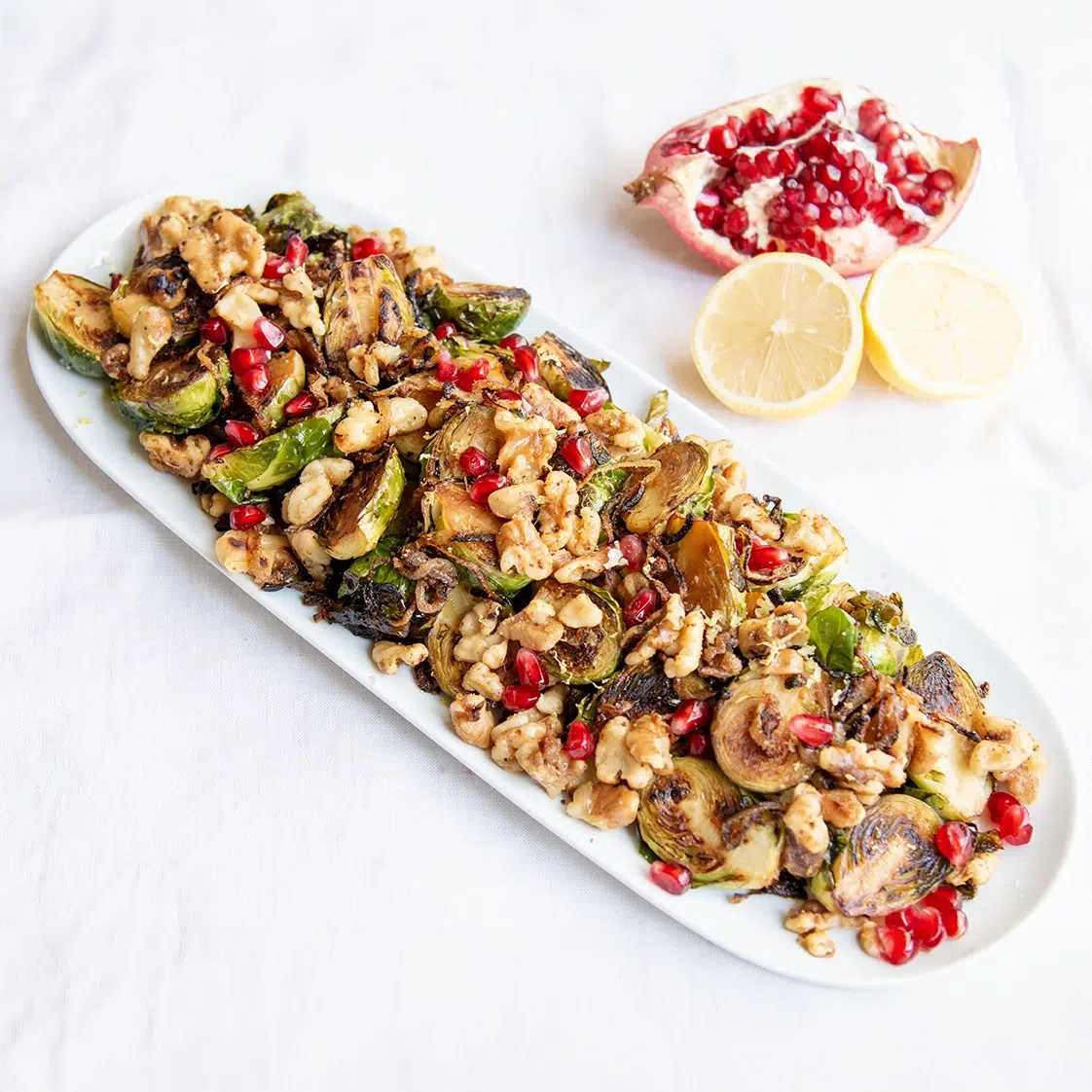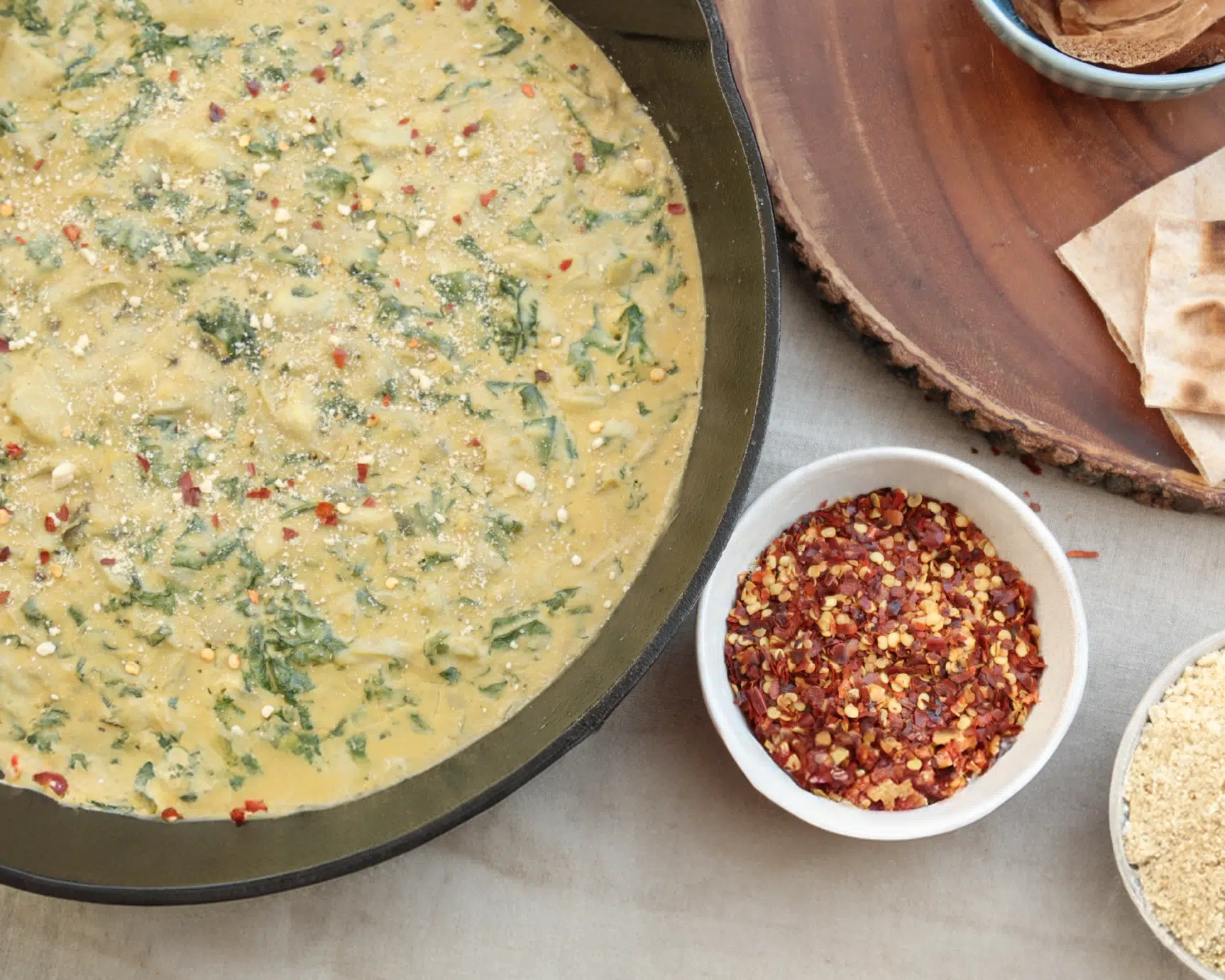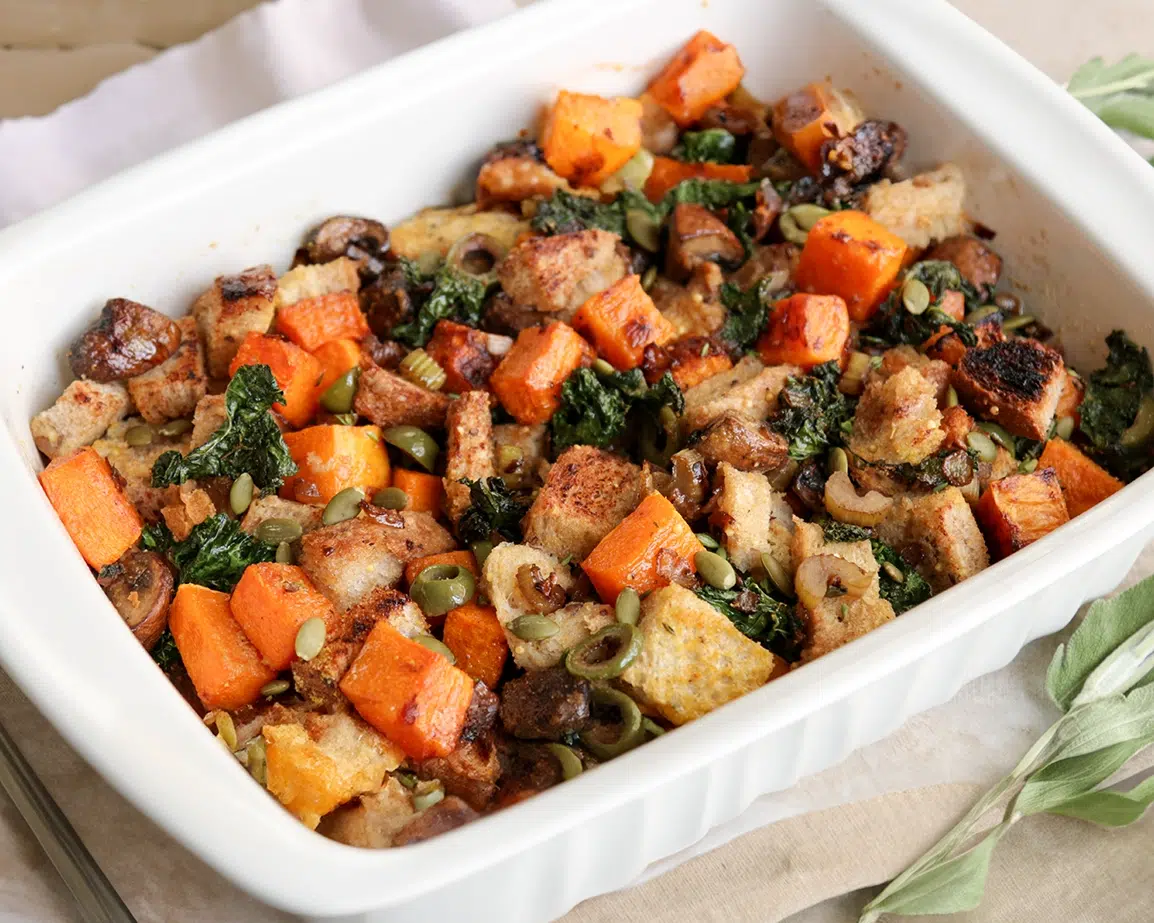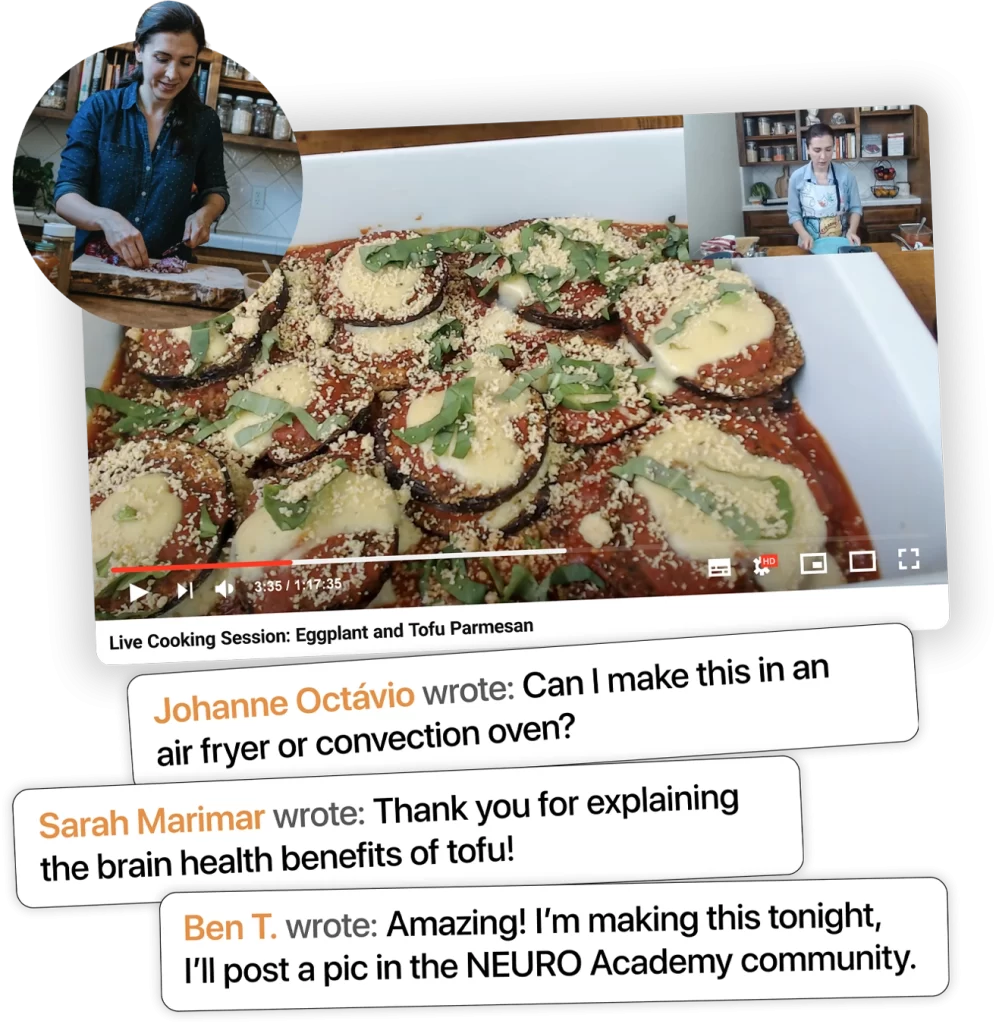A heart-warming, tasty, nutritious dip to serve with seed crackers, toasted whole wheat or sourdough bread, sliced cucumber, or baked corn tortilla chips during colder times of the year, and a real holiday party treat!
Takes 10 minutes to prepare, 20 minutes to cook, and yields 6 servings.
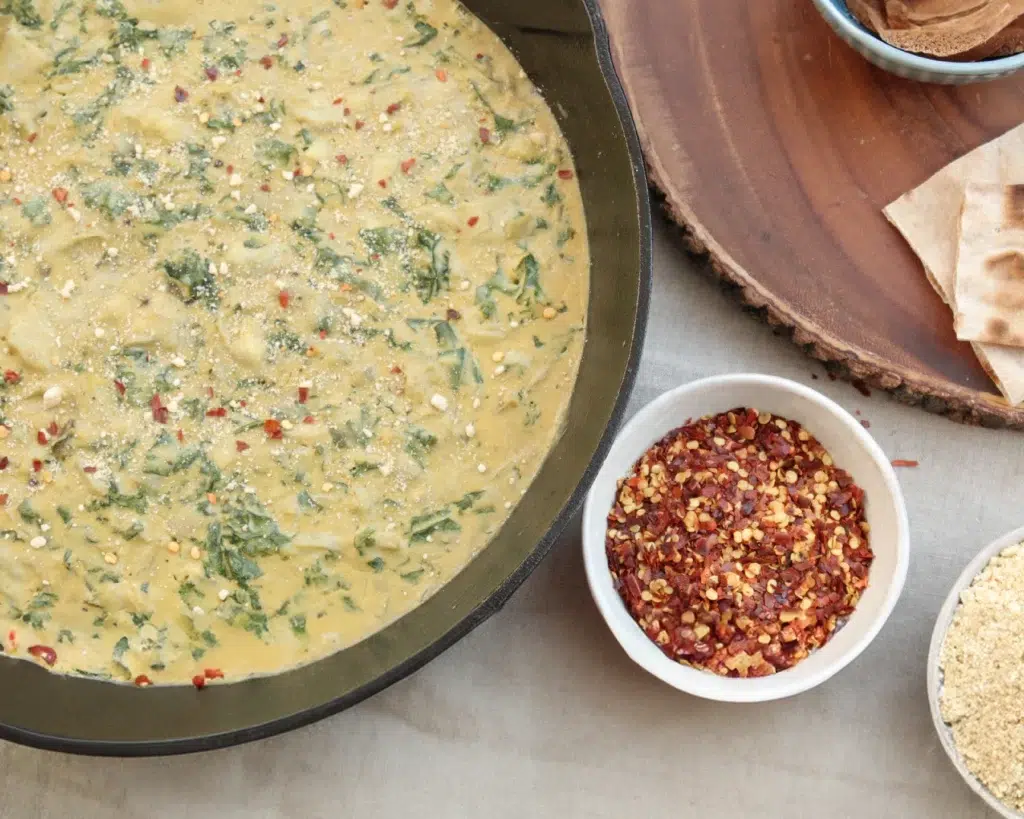
Ingredients
- EVOO
- 5 cloves of garlic (minced)
- 1 cup (150 grams) raw cashews (soaked 4 hours or overnight)
- 6 tablespoons nutritional yeast
- ¾ cup (180 milliliters) plain unsweetened soymilk
- Salt and pepper to taste
- 1 15 oz (about 420 grams) can (or jar) artichoke hearts in brine (not oil), drained and chopped
- 3 cups (180 grams) kale leaves (chopped into small pieces, destemmed, and tough rib removed)
- ¼ cup (about 30 grams) cashew Parmesan cheese
How to make our Kale and Artichoke Dip
Preheat the oven to 350°F (175ºC).
Heat a large cast-iron pan over medium heat. Add a tablespoon of EVOO and the garlic. Sauté for a minute until garlic becomes fragrant and slightly brown. Set aside.
In a strong blender, add the drained cashews, nutritional yeast, soy milk, salt, and pepper, and blend until very smooth.
Taste and adjust flavor – add more nutritional yeast for cheesy flavor. Set aside.
Add the artichoke and kale to the skillet with garlic in it, pour the cashew mixture on it, and mix everything with a spatula.
Place the skillet in the oven and bake for 10–15 minutes until warm and bubbly.
Remove and sprinkle with cashew Parmesan cheese.
Serve warm with seed crackers, toasted whole wheat bread, sourdough bread, sliced cucumber, or baked corn tortilla chips.
Use spinach or finely-chopped swiss chards instead of kale, if preferred.
Add a tablespoon of sauerkraut along with the artichoke and kale in the skillet with the cashew mixture for a tangy, complex flavor.
The brain science behind the recipe
Artichoke hearts contain antioxidants and dietary fiber, contributing to cognitive (and overall) health, and protecting the brain from oxidative stress.
Kale is rich in vitamins A, C, and K, as well as minerals like iron and calcium. These nutrients support general health, including brain function.
While not as high in omega-3 as some other nuts like walnuts or flaxseeds, cashews are still a delicious source of this polyunsaturated fatty acid. Our own study, ‘The Omega-3 Fatty Acids EPA and DHA in Brain Aging’, supports links between dietary omega-3 intake and a reduced risk of cognitive decline and dementia. Omega-3s also contribute to the fluidity of cell membranes, promote neuronal communication, and counteract inflammation. We wrote more about the relationship between brain health and good fats on our blog →
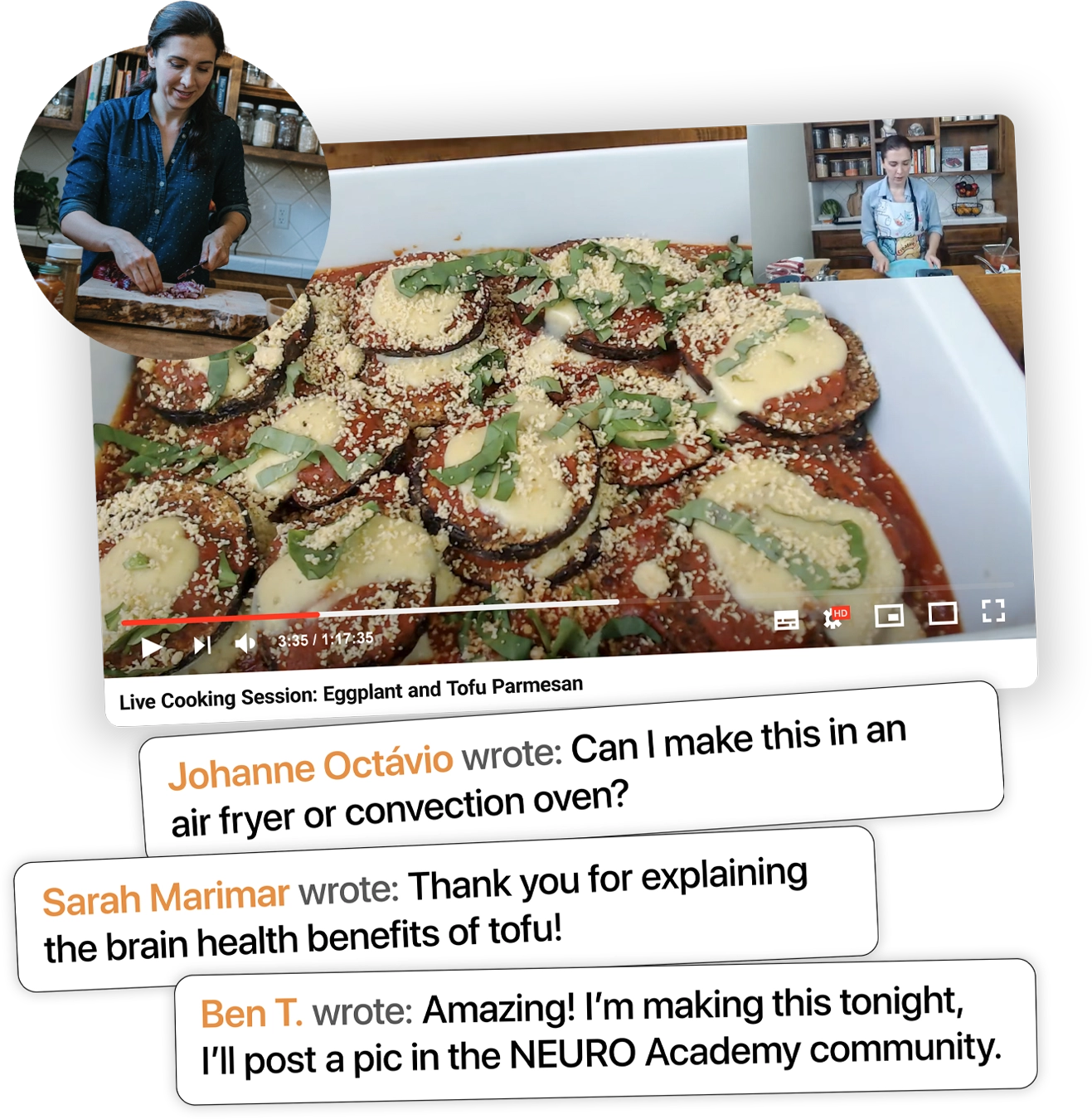
Join the NEURO Academy community to get exclusive access to Ayesha’s live brain-healthy cooking sessions.
- Ask Ayesha questions
- Learn about the brain health benefits of different foods
- Share your food photos in the NEURO Academy community, and exchange tips with other members!

Join the NEURO Academy community to get exclusive access to Ayesha’s live brain-healthy cooking sessions.
- Ask Ayesha questions
- Learn about the brain health benefits of different foods
- Share your food photos in the NEURO Academy community, and exchange tips with other members!
Get more brain-healthy recipes direct to your email inbox
Sign up for the Brain Docs newsletter for weekly recipes, brain teasers, neuroscience facts, podcast updates, and more — for free!

